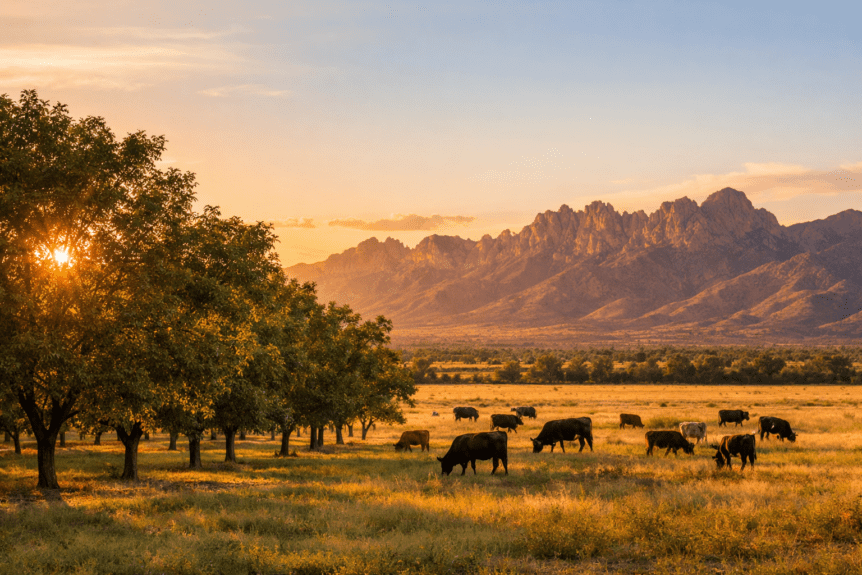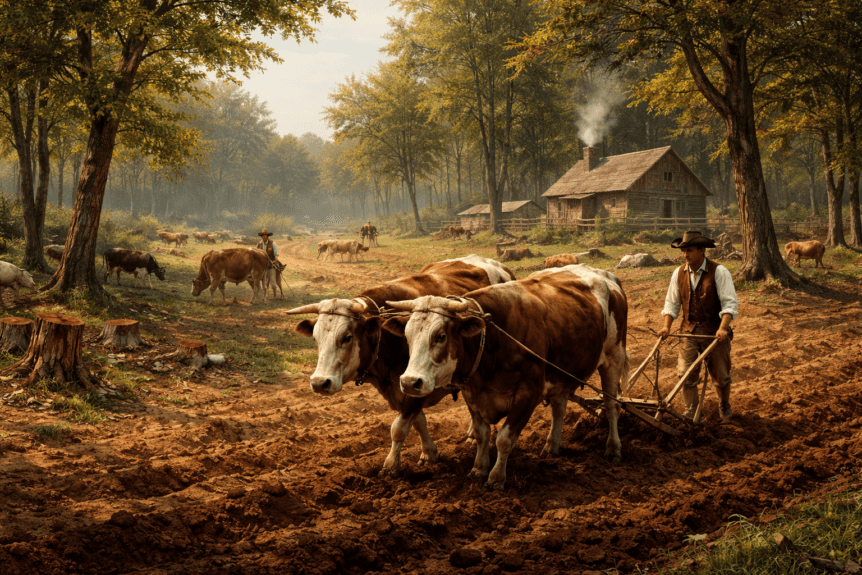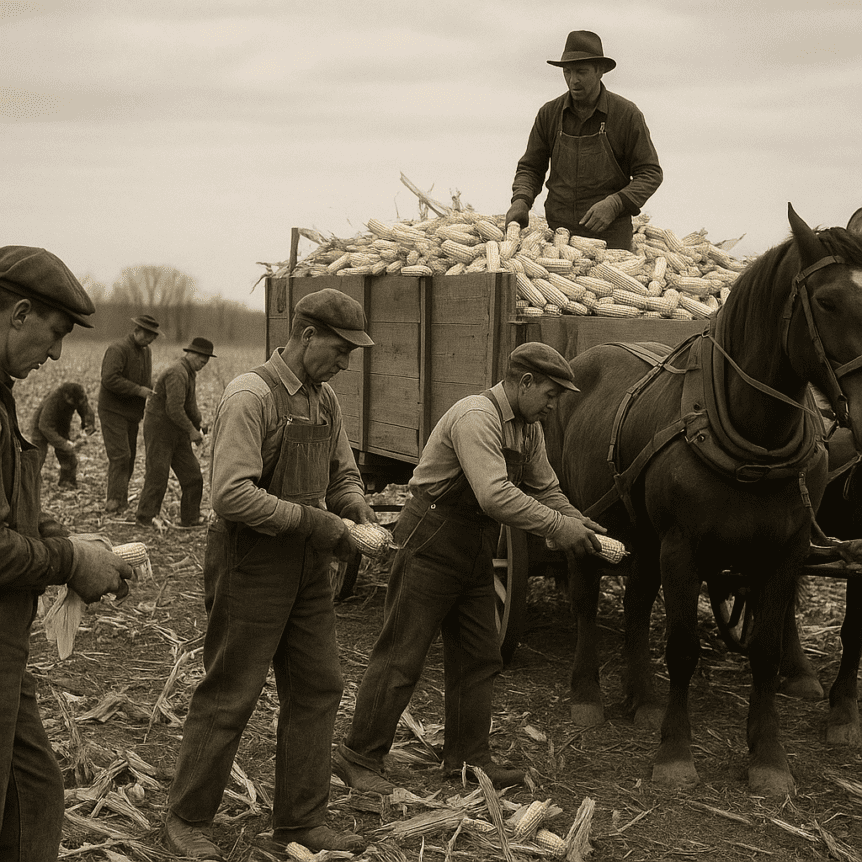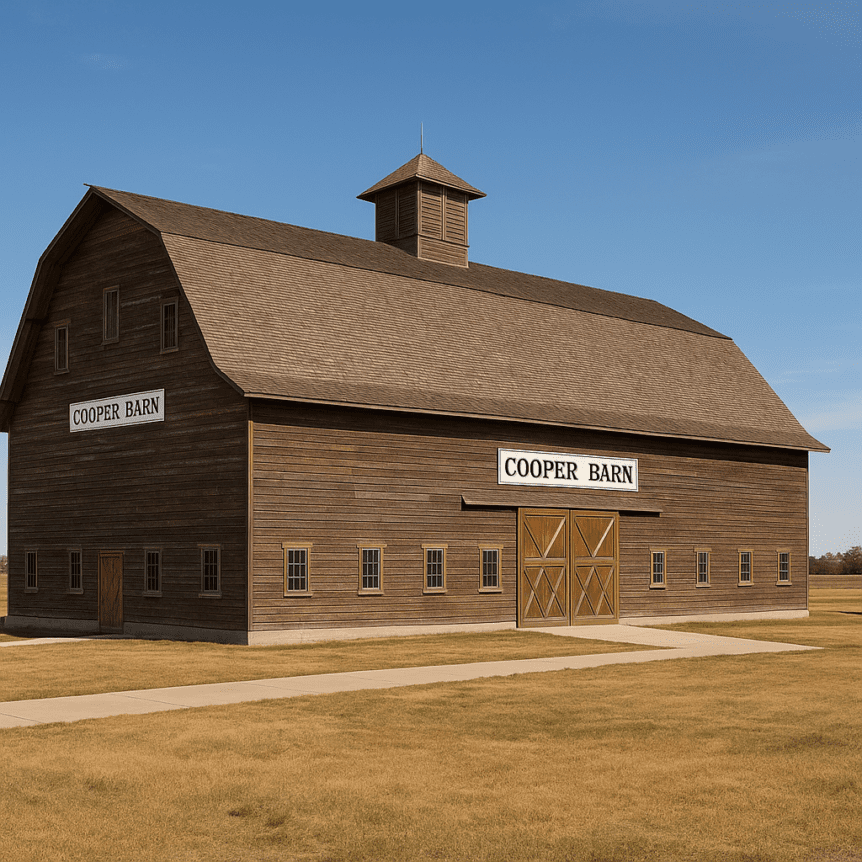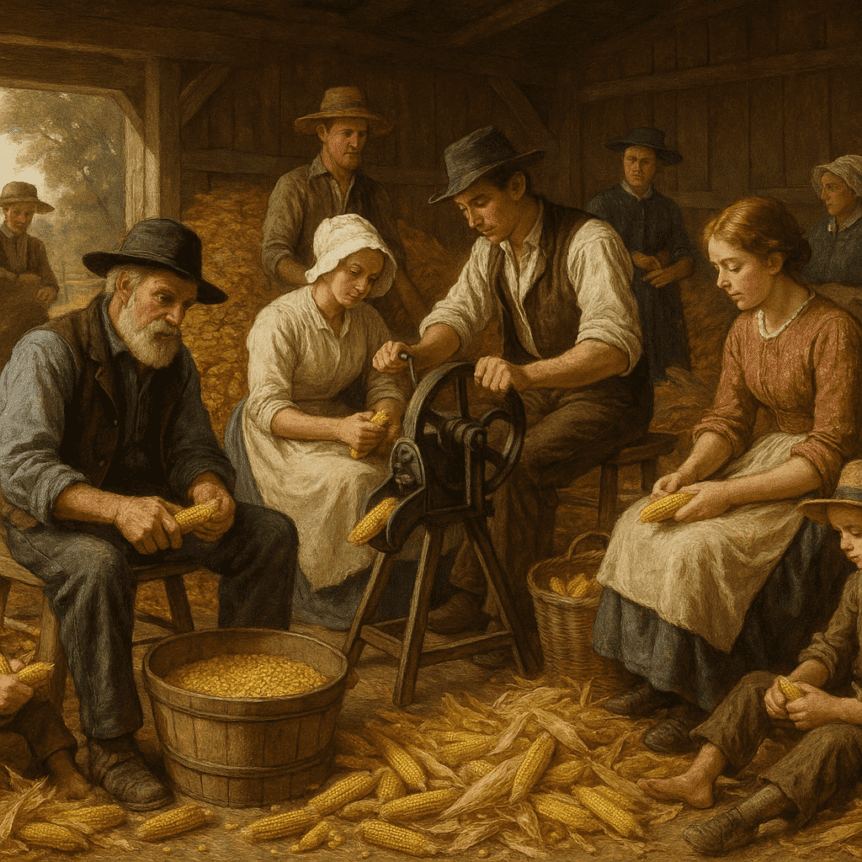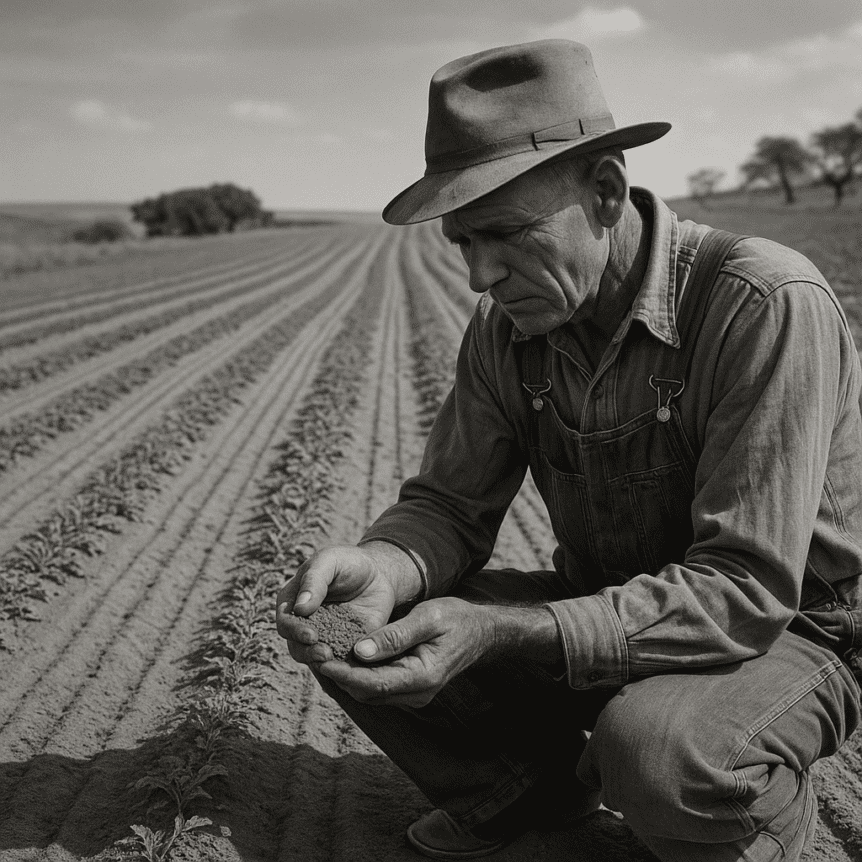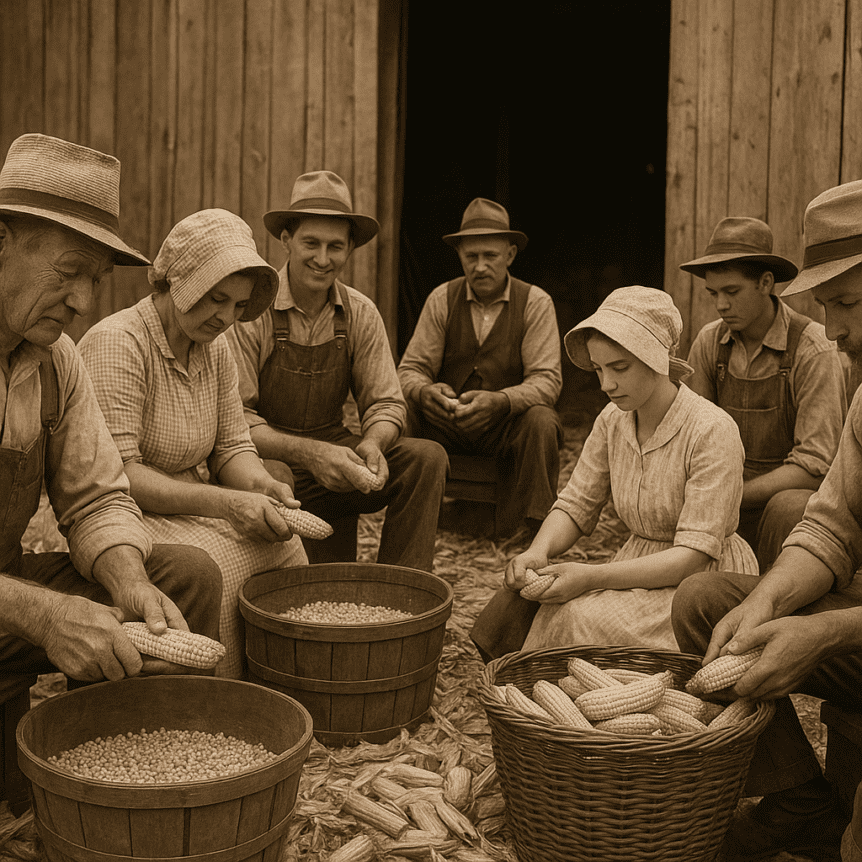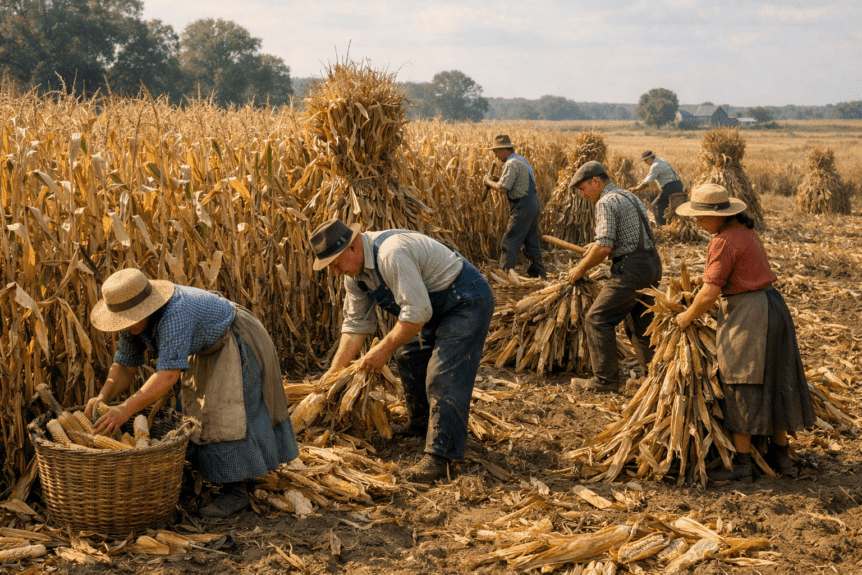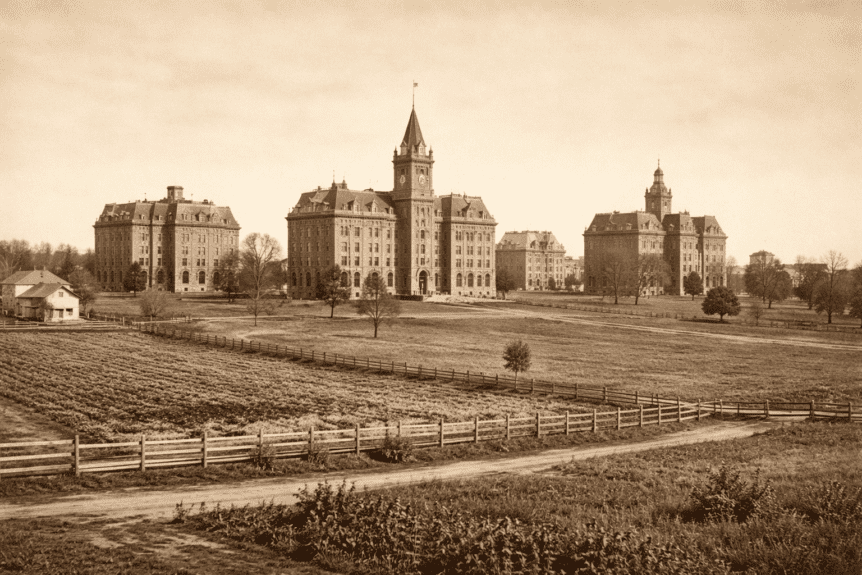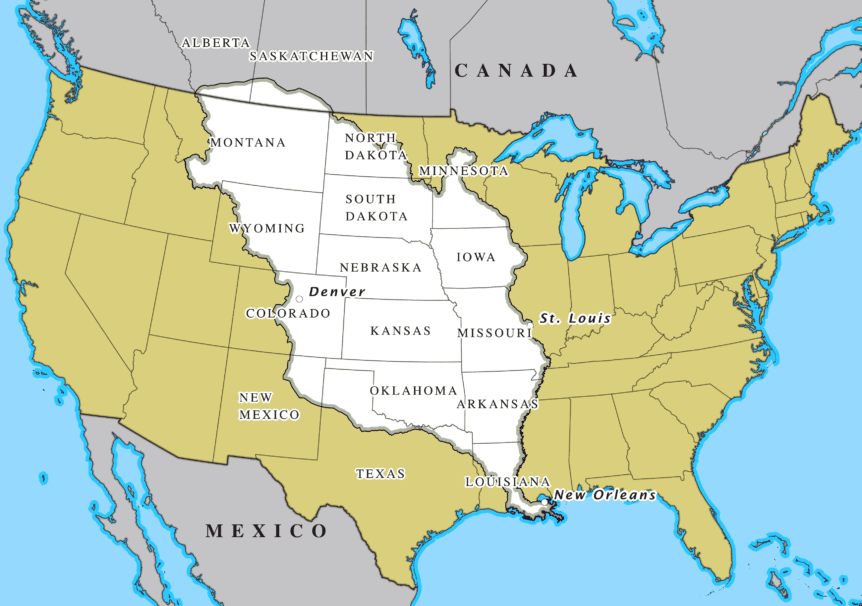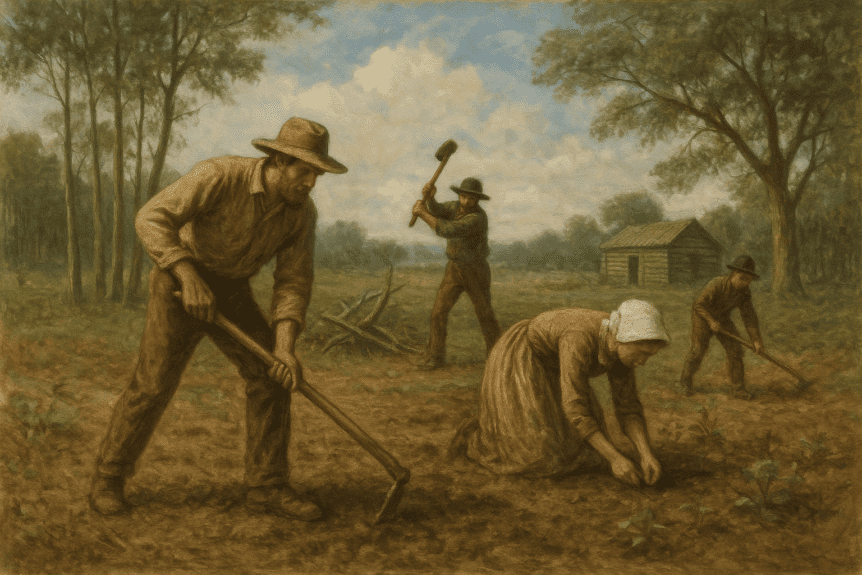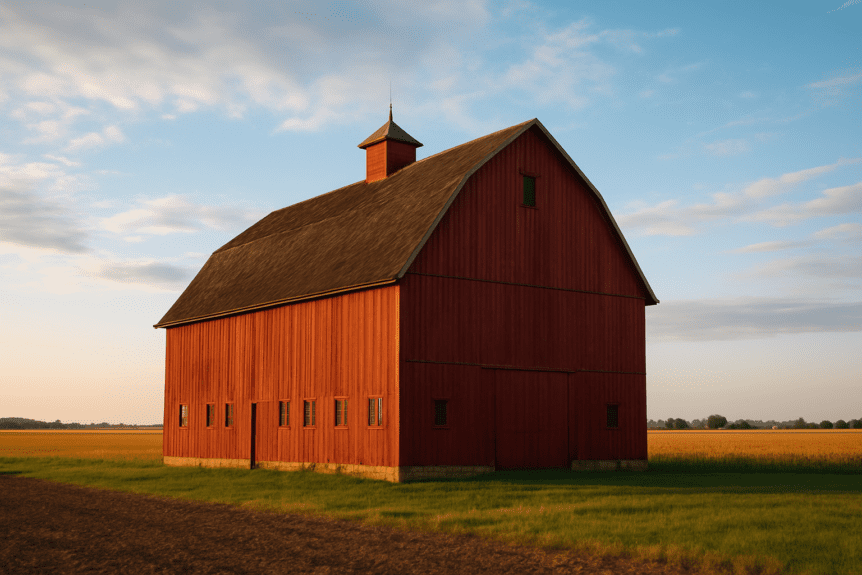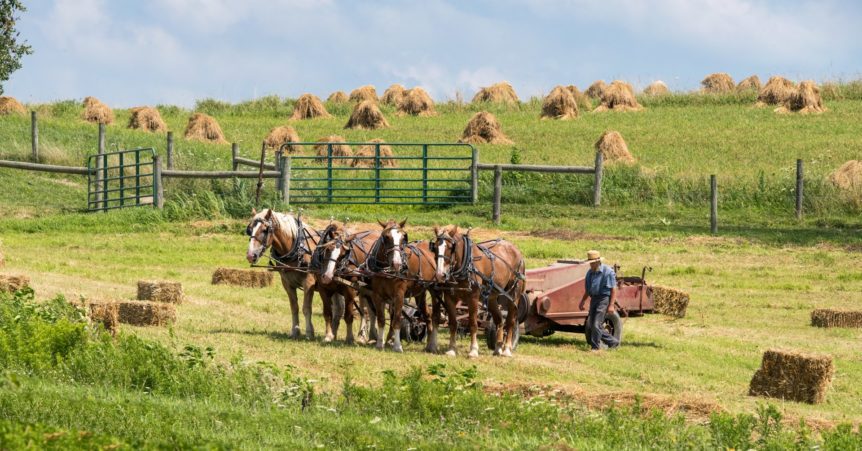New Mexico’s Agricultural Significance When most people think of top agricultural states in the U.S., New Mexico might not immediately come to mind. Yet, this southwestern state plays a vital …
Colonial Farming and Soil Stewardship: Lessons from Early America
In the early days of American colonization, settlers faced steep learning curves when it came to managing the land. Soil stewardship was not yet a science, and many early practices …
America’s Largest Barns: Icons of Agriculture
Barns have long been a symbol of America’s agricultural heritage. They vary widely in size, shape, and purpose, yet many still stand as enduring reminders of the nation’s farming past. …
The History of Corn Harvesting in American Agriculture: From Hand-Husked Fields to Mechanization
Hand-Harvesting Corn – A Labor-Intensive Tradition Corn has long been a cornerstone of American agriculture, but harvesting it in the early 20th century was a labor-intensive challenge. Before tractors and …
The Cooper Barn: A Kansas Landmark of American Agricultural History
Barns have long stood at the center of American agriculture, symbolizing hard work, innovation, and the enduring spirit of farm families. As settlers pushed westward across the heartland, barns became …
Corn Shelling Bees: How Community and Early Technology Shaped American Agriculture
Corn’s Foundational Role in American Agriculture Corn has always played a central role in American agriculture, serving as a vital crop for both human consumption and livestock feed. From early …
How the Great Depression Transformed American Farmland
From Dust to Renewal: How the Great Depression Sparked U.S. Soil Conservation When the winds of the 1930s carried dust across America’s plains, it wasn’t just soil that disappeared—it was …
Corn Shelling Bees: How Early Americans Processed Corn by Hand
Corn Shelling Bees: A Cornerstone of Early American Agriculture Corn has played a vital role in American agriculture since the nation’s earliest days. Long before modern machinery transformed farming, corn …
National Corn Husking Association: Preserving the Tradition of Hand-Harvested Corn
A Tradition Born from Necessity From the 1920s to the 1940s, harvesting corn by hand was more than a skill—it was essential for farmers across the United States. Before modern …
Ohio State University: The Land-Grant Vision That Shaped Ohio’s Agricultural Legacy
Ohio State University, one of the nation’s leading public research universities, has its roots deeply embedded in agricultural and mechanical education. Founded in 1870, the university was established as a …
The Louisiana Purchase: How Thomas Jefferson Secured America’s Agricultural Future
Introduction: A Turning Point in American Agriculture In the early years of the United States, few decisions carried as much long-term impact as the Louisiana Purchase. While often remembered for …
How Weather Shaped Early American Agriculture
An American Agriculture History Minute with Mark Oppold Early American farming was never just about the land—it was about the weather. In this American Agriculture History Minute, agricultural historian Mark …
Largest Barns in the United States
Exploring the Debate Over the Biggest Barns in the United States By Mark Oppold – American Agriculture History Minute When it comes to American agriculture, size has always mattered—and few …
How Hay Baling Began: The First Hay Presses and Early Innovations
The practice of baling hay is central to modern agriculture, but its roots extend back to the mid-19th century, when inventive mechanical solutions began to reshape how farmers stored and …










